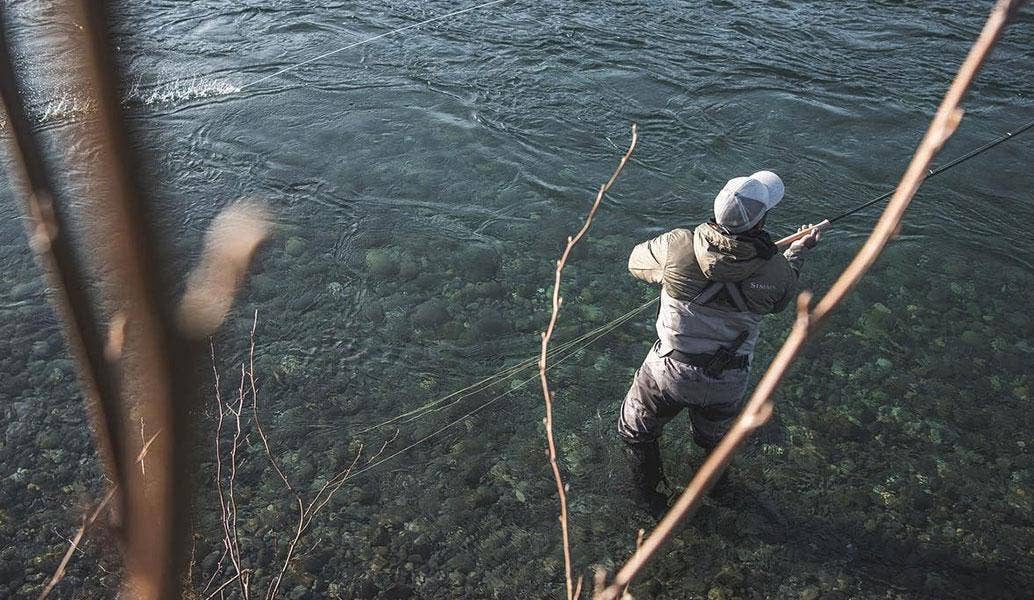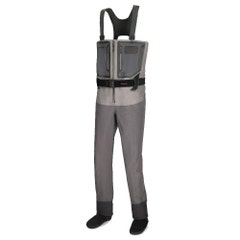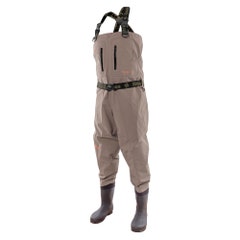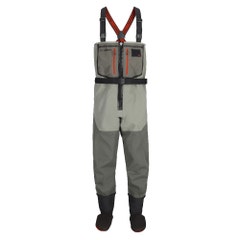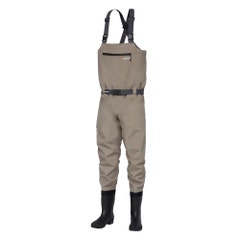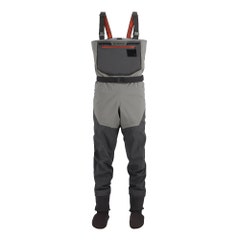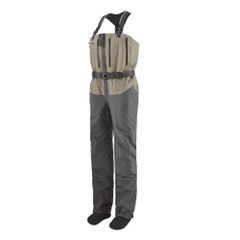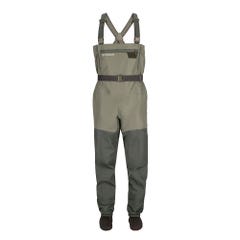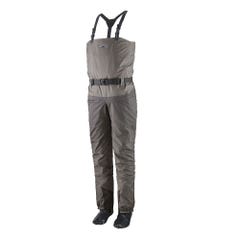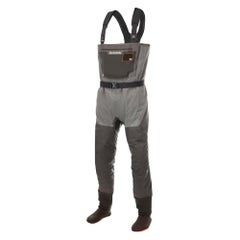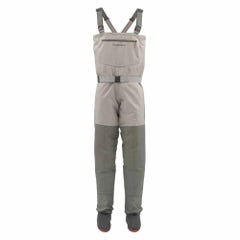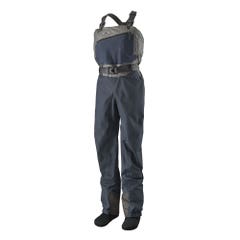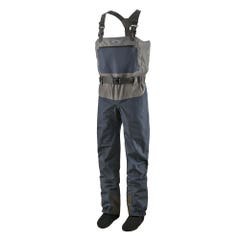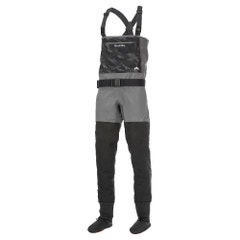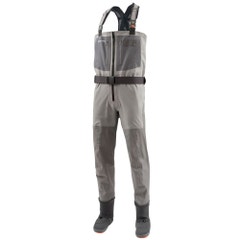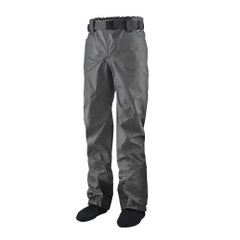For most fly fishers waders are essential gear for both river and stillwater angling and today’s angler has more choice than ever before with modern materials, such as GORE-TEX®, making wearing them a comfortable and pleasant experience.
Top Tips for Choosing Waders & Boots
Non-Breathable Waders
Non-breathable fishing waders are constructed from materials such as neoprene, PVC or nylon. They come with boots attached, which can have studded or cleated soles, and they are a less expensive option for infrequent fishers, for emergency use or for pond maintenance etc.
Breathable Waders
Breathable waders are all about comfort. They are lightweight and, importantly, wick moisture away from the body so that even in tough conditions you forget you are wearing them and can just concentrate on your fishing. Breathable waders perform well in both warm and cold conditions but it is important what you wear underneath them. Jeans are not suitable as they act as a barrier to moisture control, so it is important to wear appropriate wicking wader base layers.
Breathable waders fit better than other types of wader, for example the Simms G3 range comes in 25 different sizes. It is important to get a good fit, not just for comfort and looks, but ill-fitting waders with excess material can wear prematurely and you don’t want excess material flapping around your legs when wading in a fast flow.
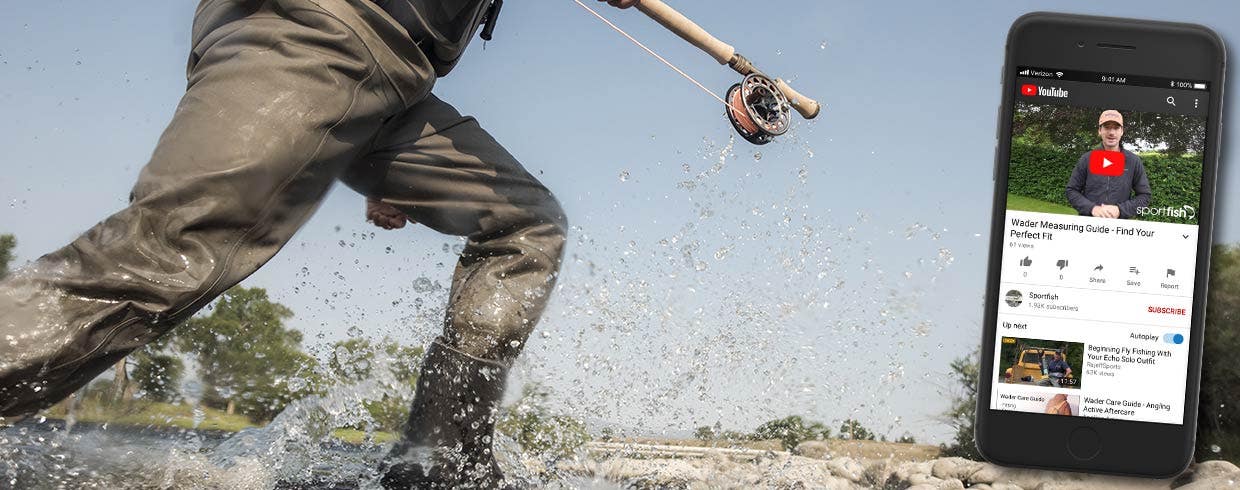

Wading Boots
Most breathable waders come with neoprene stocking feet and so require separate wading boots. Modern wading boots offer excellent comfort and ankle support and come in different sole options. Specialist treads, such as Simms Vibram® Idrogrip, feature the latest components to maximise underfoot stability and slip resistance.
Felt Soles
Felt soles have been around for a long time and offer excellent grip on rock and gravel, however they are prone to slip on wet grass, mud and snow and metal studs can be added to help grip in these more slippery conditions. In some parts of the world felt soles are banned due to the risk of accidental transportation of invasive species, so it is advisable to check before travelling.
Rubber Soles
Rubber soles are great for general all round use, generally giving better grip on mud, wet grass and snow and they can also be studded or cleated for extra grip if required.
The choice of felt or rubber is down to personal preference and to experience in different terrains; frequent fishers may carry both options to cater for all situations.
There are many different breathable waders on the market at various price points and the best are a good combination of breathability with durability. If you are a regular fisher then breathable waders are the recommended option and taking a little extra care of them will greatly extend their useful life.
Breathable Wader Care and Maintenance
Pinholes, Scrapes and Tears
The most common problems that occur in GORE-TEX® and other breathable garments are pinholes, scrapes and tears (we use the term ‘pinhole’ to identify any small violation of the breathable fabric that allows moisture to penetrate the interior of the garment) and these are usually caused by thistles, thorns, hooks and sharp rocks etc.
Most thistles and thorns are deflected by the fabric, but sooner or later some of them will find a way through the weave and cause leaks. To avoid this, think carefully when walking the banks and go around thorn bushes or other potentially damaging objects, instead of right through them, and don’t sit on any rough or sharp surfaces.
Inner Leg Abrasion
Inner leg abrasion is usually related to wrong sizing or heavy wear and is caused by the fabric inside the legs rubbing together when walking. Selecting the right size when making your purchase is extremely important to ensure that you prolong the life of your waders. You should also note that long days of walking and wading may result in fabric abrasions along the back edge of the seam, this is easy to repair and is a common wear and tear issue.
“For most fly fishers waders are essential gear for both river and stillwater angling and today’s angler has more choice than ever before” - Steve Peterson
TAKING CARE OF YOUR WADERS & BOOTS
Proper Care and Storage
Whether you use your waders once a year or once a week they need to be cleaned, dried and stored correctly. The main area to focus on is the inside of the wader. Even though your waders are breathable and moisture is allowed to escape, condensation may appear on the inside and although much of this moisture will escape, there will be some moisture build-up which in turn will collect dust, dirt and fabric from clothing, a perfect breeding ground for mould/mildew and this is where the problems begin if you do not care for your waders.
Mould only needs three things to grow. A food source (dirt) A source of moisture (condensation) and a place to grow (your waders) Once the microscopic spores take hold and begin to grow, they will break down the breathability of the fabric and cause damage to the membrane causing your waders to leak. Keep them clean and you'll never have this problem
After each fishing session make sure to allow the product to dry properly before you store it.
Waders, wading jackets and wading packs etc. should be hung in a vented, warm and dry place and all boots should be properly dried before being put away. If clothes or boots/shoes are stored wet or damp then over time mildew, a form of fungus, will start to grow on them and this has the potential to cause severe damage.
On waders and jackets mildew causes problems such as seam tape lifting (the seam tape on neoprene feet and GORE-TEX® seam tape inside the garment comes off). Delaminating of the fabric can also occur. Common for all products is that the growth of mildew starts a general material breakdown as it produces enzymes that convert the cellulose or protein in the fabric into the compounds on which it feeds - basically speaking, mildew slowly breaks down the garment and eats it!
After gear is properly dried it should always be stored out of direct sunlight in a cool, dry environment with adequate ventilation. If a product is infested by mildew it should be isolated by sealing it in a polythene bag and either disposed of immediately, or sent to trained professionals for decontamination.
It is recommended that your waders are stored out of direct sunlight. Creasing whilst unsightly does not adversely affect the performance of waders and the best way of avoiding this is to hang the waders upside down in a Wader Rack Always store in a cool, dry place. Make sure you hang your waders out to dry overnight after you have used them. This will lengthen their life, plus you won’t have to get back into an uncomfortable wet/damp pair the next morning.
After use in Saltwater, or brackish water, the waders should always be washed down with fresh water and felt soles should always be hosed off well with fresh water, after every fishing trip, to remove mud deposits. Without this, the soles will become hard, wear faster, be less effective and cause the soles to become rigid and peel off.
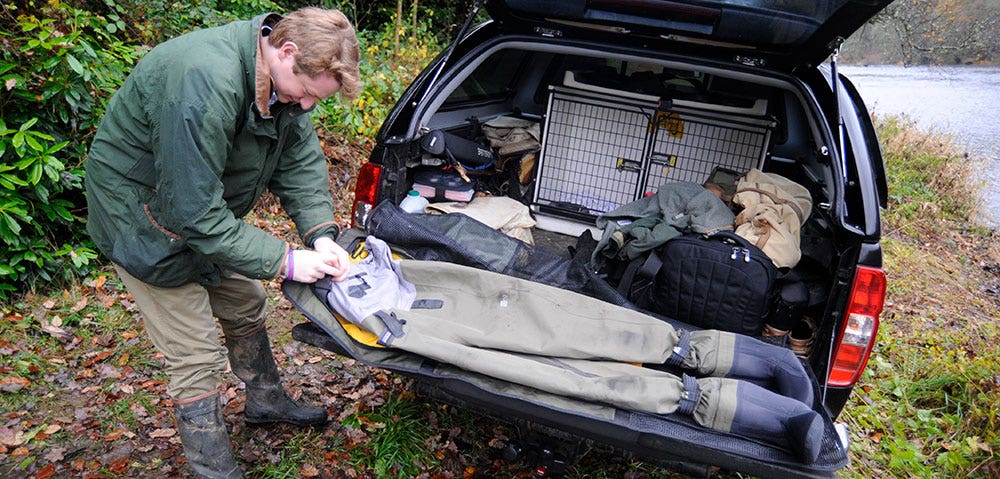

Self-Repairs
If you get leaks along any seam in a waterproof, breathable garment you should not do a self-repair to those areas. Most reported seam leaks are, in fact, pinholes along the seam tape and not a true seam leak. Aquaseal or other adhesives do not come off and any self-repair that is done along a seam may potentially void your warranty as we cannot remove and correct the problem without destroying the seam. We understand why a self repair may need to be done in the field, but please understand that we may not be able to correct the problem if the seam has been altered or covered in adhesive.
ReviveX® Application and Upkeep
Over time and with exposure to rushing water, long days in the rain, dirt and other factors your GORE-TEX® garment may begin to ‘wet out’ and no longer repel water effectively from the surface fabric. This is usually a result of the DWR (Durable Water Repellency) wearing off. Although water isn’t leaking all the way through the garment, it may feel and look like it is because ‘wet out’ reduces breathability and creates excess interior condensation making you feel damp and cold. It is easily addressed with the use of ReviveX® but do follow the instructions carefully.
Wading Safety
Every year there are wading accidents, some of which are fatal. Many could be avoided by wearing a lifejacket and following some simple guidelines. Here are some ground rules for staying safe:
- Wading is a learned skill so don’t be surprised when the ghillie wades to mid-river without blinking! You must take your time and always err on the side of caution
- Wading deep can scare the fish; cast to areas in excess of thigh-depth from the shallows - wading deeper will only disturb your quarry and hinder casting
- Always wear an automatic lifejacket designed to keep your head above water. If you fall and hit your head, you may not be able to inflate a manual lifejacket even in shallow water
- Have your lifejacket professionally serviced at the end of every season and carry a spare gas cylinder
- Use a wading stick but don’t rely on it! They are best for probing the depth or to lean against if you get in trouble
- Beware the fast water at the tail of a pool where the current can draw the gravel from under your feet, making it impossible to keep balance
- Don’t wade fast water with a net on your back. If you fall it could catch on rocks and impede your recovery
- Always carry spare clothes in your vehicle, especially in spring and autumn. Wet clothing makes you very cold very quickly if you fall in
- Don’t fish alone if possible. A fellow angler could save your life
- There is always tomorrow – don’t take unnecessary risks

